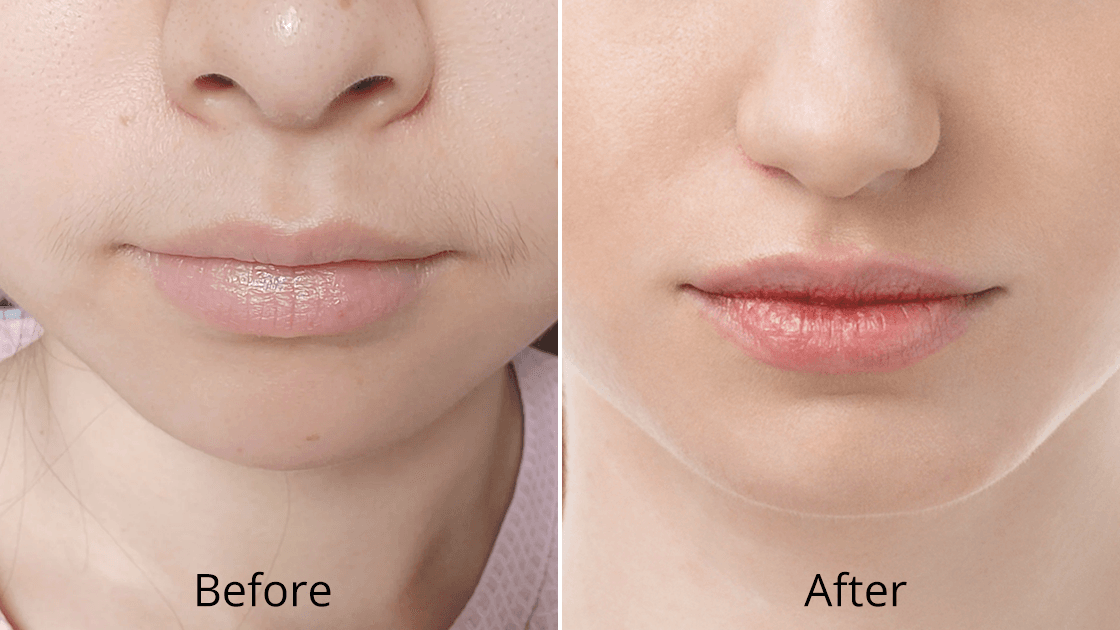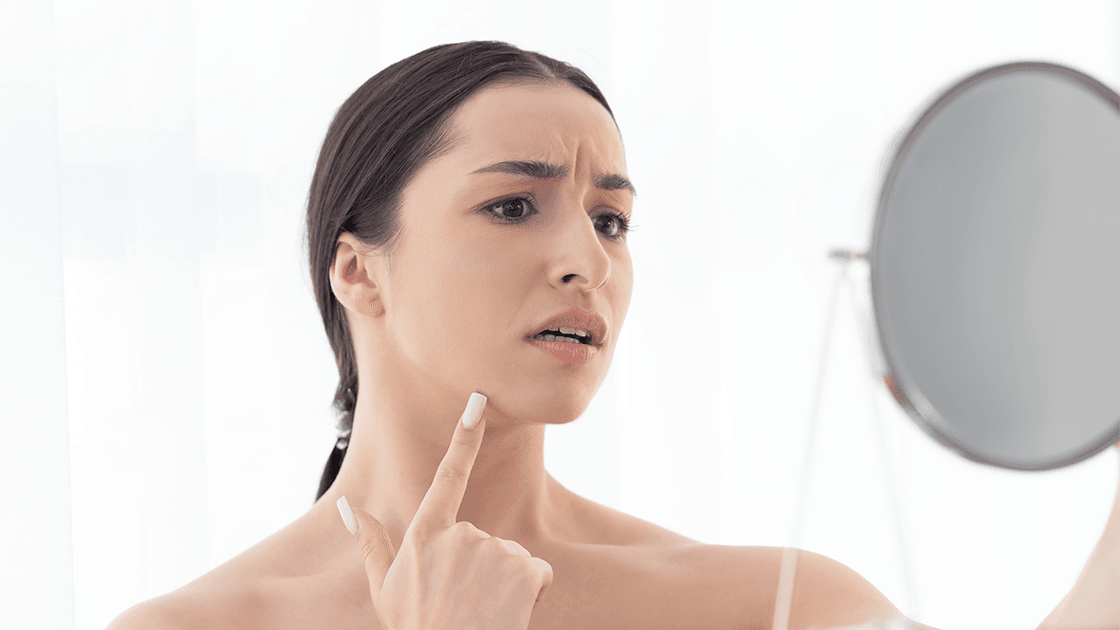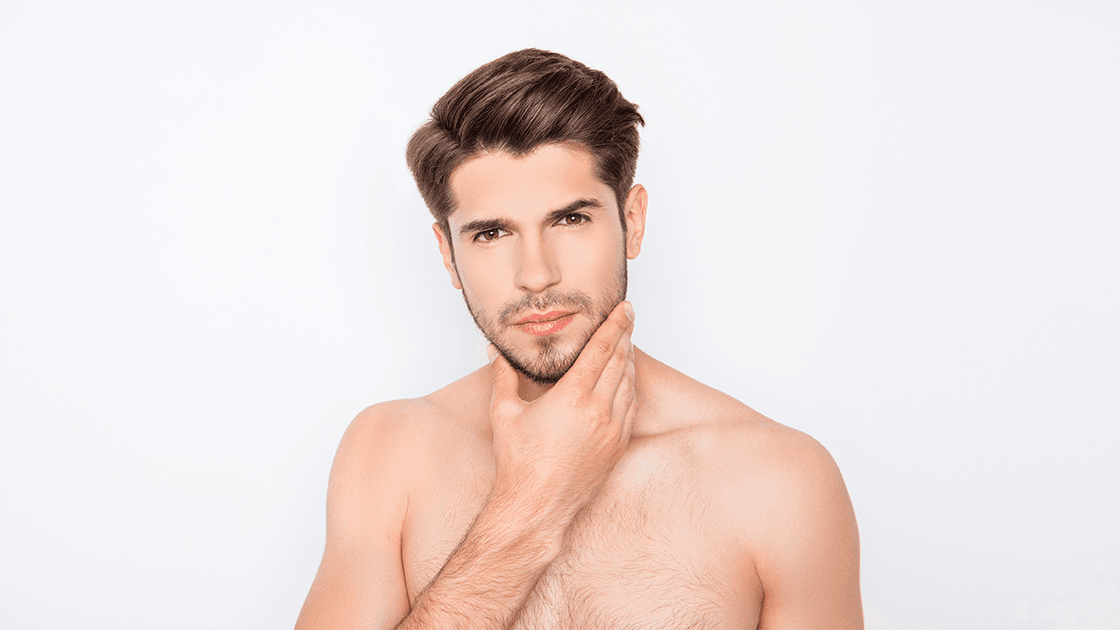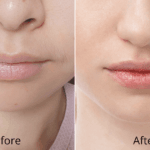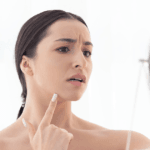Facial hair removal has evolved dramatically over the past decade, with laser technology emerging as the gold standard for achieving smooth, hair-free skin. As traditional methods like shaving, waxing, and threading continue to present challenges such as ingrown hairs, skin irritation, and temporary results, more individuals are turning to laser hair removal for a permanent solution. This comprehensive guide explores the safety, efficacy, and considerations for using laser hair removal on various facial areas, providing evidence-based information to help you make informed decisions about this increasingly popular cosmetic procedure.
1. Introduction: The Rise of Facial Laser Hair Removal
The landscape of facial hair removal has transformed significantly, with laser technology leading the revolution in aesthetic treatments. Understanding the factors driving this change and the unique considerations for facial treatments provides essential context for anyone considering this procedure.
1.1 Growing Popularity of Laser Treatments for Facial Hair
Laser-Haarentfernung has quickly become a popular choice for removing unwanted facial hair. As people seek smoother, low-maintenance skin, more are turning to laser treatments for long-lasting results. Unlike shaving or waxing, which need frequent upkeep, laser targets hair follicles at the root, reducing hair growth over time. Common treatment areas include the upper lip, chin, and jawline, especially for women with hormonal hair growth or conditions like PCOS. Men also use facial laser to manage thick beards and prevent ingrown hairs. Advances in laser technology, especially devices safe for various skin tones, have made the treatment more accessible and effective. Sessions are faster with minimal downtime, and visible improvements appear after just a few treatments. Because of these benefits, facial laser hair removal continues to gain popularity across different ages and skin types.
1.2 Benefits Over Traditional Hair Removal (Shaving, Waxing, Threading)
Long-Term Results: Laser targets hair follicles directly, leading to lasting hair reduction with fewer sessions over time.
Gentle on Facial Skin: Unlike shaving, which can cause razor burn and cuts, laser treatment is non-abrasive and ideal for sensitive facial areas.
Minimal Discomfort: Compared to waxing and threading, which can be painful and irritating, laser treatment is generally more tolerable with fewer side effects.
No Visible Hair Needed: Laser doesn’t require hair to grow out before treatment—unlike waxing or threading, which need a certain length for effective removal.
Reduces Ingrown Hairs: By destroying hair at the root, laser hair removal helps prevent ingrown hairs and bumps, especially in areas like the chin and jawline.
Cost-Effective Over Time: Though the upfront cost is higher, laser treatments save money in the long run by reducing the need for razors, wax, or threading appointments.
Convenient and Quick: Sessions are fast, especially for small areas like the upper lip or sideburns, making it easy to fit into a busy schedule.
1.3 Is Facial Laser Hair Removal Safe and Effective?
Clinical evidence supports the safety and effectiveness of facial laser hair removal when performed by trained professionals. Diode laser technology, using an 810nm wavelength, targets melanin effectively while reaching the right depth to treat facial hair follicles safely. It avoids damage to surrounding tissue. Modern diode lasers include advanced cooling systems that keep the skin at 4°C during treatment. This reduces discomfort and lowers the risk of burns or thermal injury. Cooling is especially important for facial areas, where the skin is more sensitive and cosmetic results matter most. When proper protocols are followed, side effects are minimal. The most common are temporary redness and mild swelling. These usually resolve within 24 to 48 hours, allowing most people to return to daily life quickly.
1.4 Who Typically Seeks Facial Laser Hair Removal?
Women: The majority of patients, mainly seeking treatment for common areas like the upper lip, chin, and jawline.
Men: Increasingly opting for laser hair removal for beard shaping, neck hair reduction, and managing excessive facial hair affecting appearance or comfort.
Individuals with Hormonal Conditions: Such as polycystic ovary syndrome (PCOS) or hirsutism, who often experience excessive facial hair growth that may not respond well to topical or hormonal treatments and require tailored laser protocols.
Transgender Individuals: Frequently pursue facial laser hair removal as part of gender-affirming care, often needing specialized treatment due to coarser hair and higher follicle density.
Others Seeking Convenience and Long-Term Results: People of various ages and backgrounds looking for a more permanent, low-maintenance solution to unwanted facial hair.
2. How Laser Hair Removal Works on the Face
Understanding the scientific principles behind laser hair removal provides insight into why this technology is particularly effective for facial applications and helps set realistic expectations for treatment outcomes. The process involves sophisticated targeting of melanin chromophores within hair follicles using specific wavelengths of light energy.
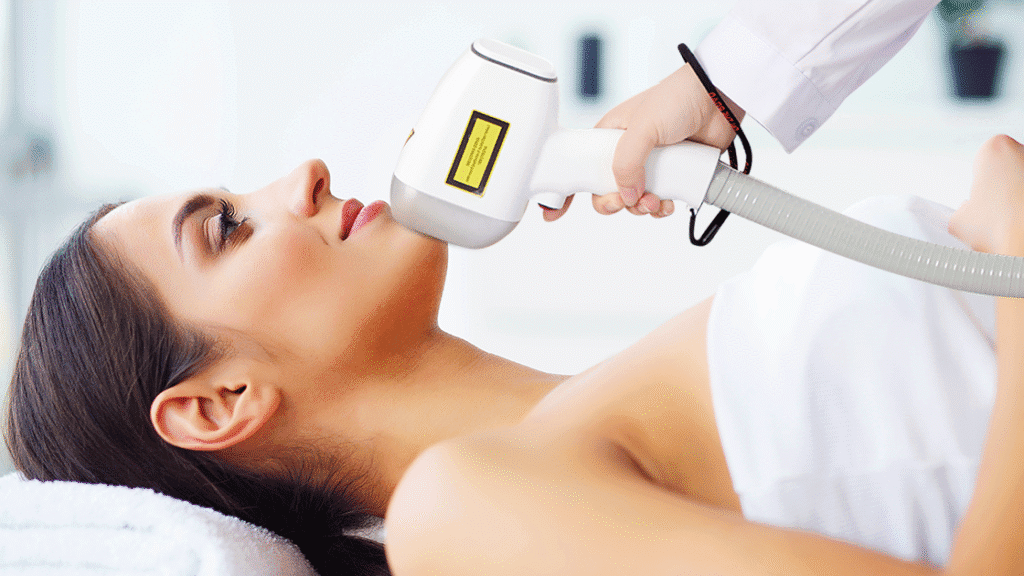
2.1 Targeting Melanin: The Science Behind It
Diode laser hair removal works through selective photothermolysis. The 810nm wavelength is absorbed by melanin in hair follicles, converting light into heat. This heat damages the structures that produce hair while sparing nearby skin tissue. The 810nm wavelength offers a good balance between melanin absorption and skin penetration. It reaches deep enough to target facial hair follicles but avoids excessive absorption by surface melanin. This reduces the risk of pigmentation changes or skin burns. The process depends on the contrast between hair and skin color. Hair follicles contain more melanin than the surrounding skin, allowing precise targeting. With proper settings and cooling systems, this method is both safe and effective across various skin types.
2.2 Skin Types and Hair Colors That Respond Best
The Fitzpatrick skin typing system provides framework for determining optimal candidates for facial laser hair removal. Types I-IV typically respond excellently to diode laser treatment, with darker hair colors (brown to black) showing superior results due to higher melanin content that facilitates laser energy absorption. Modern diode laser systems with advanced cooling and adjustable parameters can safely treat darker skin types (V-VI) that were previously considered challenging for laser hair removal. However, these treatments require specialized expertise and modified protocols to prevent pigmentary complications while achieving effective hair reduction results. Gray, white, and very light blonde hairs present challenges for laser hair removal due to minimal melanin content. These hair colors may require alternative approaches or combination treatments to achieve satisfactory results, as the lack of chromophore limits laser energy absorption necessary for follicular damage.
2.3 Is It Permanent? What to Expect from Results
Laser hair removal provides long-term hair reduction rather than absolute permanent removal, with most patients experiencing 80-95% reduction in hair growth after completing a full treatment series. The term “permanent hair reduction” more accurately describes outcomes, as some fine, dormant follicles may eventually produce hair, particularly in response to hormonal changes. Facial laser hair removal typically requires 6-8 treatment sessions spaced 4-6 weeks apart to target hair follicles during their active growth (anagen) phase. Each session progressively weakens follicular structures, with patients noticing gradual reduction in hair density, thickness, and growth rate throughout the treatment course. Maintenance treatments may be necessary periodically, particularly for hormonally-influenced areas like the chin and upper lip in women. These touch-up sessions are typically less frequent and less intensive than initial treatments, helping maintain optimal results over time.
3. Facial Areas You Can Safely Treat
Facial laser hair removal can address multiple areas effectively, though each region requires specific considerations regarding technique, parameters, and expected outcomes. Understanding the unique characteristics of different facial zones helps optimize treatment planning and patient satisfaction.
3.1 Upper Lip Laser Hair Removal
The upper lip represents one of the most commonly treated facial areas, with excellent success rates due to typically coarse, pigmented hair suitable for laser targeting. This area responds well to diode laser treatment, with most patients experiencing significant hair reduction within 4-6 sessions depending on hair characteristics and hormonal factors. Treatment of the upper lip requires careful attention to lip border definition and symmetry to maintain natural appearance. The vermillion border must be protected during treatment, and practitioners often use specialized techniques to ensure precise targeting of hair-bearing areas while avoiding damage to lip tissue. Post-treatment care for upper lip laser hair removal includes sun protection and gentle skincare to prevent complications. Patients should avoid irritating products and aggressive exfoliation for several days following treatment to allow proper healing and minimize risk of pigmentary changes.
3.2 Chin and Jawline
Chin and jawline hair removal addresses both aesthetic and practical concerns, particularly for women experiencing hormonal hair growth and men seeking precise beard line definition. This area typically contains coarse, deeply-rooted hair that responds excellently to diode laser treatment with appropriate energy parameters. The anatomical complexity of the chin and jawline region requires skilled technique to navigate contours and ensure comprehensive coverage. Practitioners must consider individual facial anatomy and desired outcomes when planning treatment patterns and selecting appropriate spot sizes for optimal results. Hormonal influences on chin hair growth may necessitate ongoing maintenance treatments, particularly in women with conditions like PCOS or during hormonal transitions such as menopause. These factors should be discussed during consultation to set realistic expectations for long-term outcomes.
3.3 Cheeks and Sideburns
Cheek and sideburn laser hair removal serves both cosmetic and professional purposes, helping individuals achieve desired facial hair patterns or address excessive hair growth in these regions. The relatively large treatment area allows for efficient sessions with good patient tolerance and excellent results. Sideburn shaping requires artistic skill to create natural-looking hairlines that complement facial structure and personal style preferences. Communication between practitioner and patient is crucial to establish clear treatment boundaries and achieve desired aesthetic outcomes while maintaining masculinity where appropriate. The hair characteristics in cheek and sideburn areas typically respond well to laser treatment, though multiple sessions are necessary to address all hair growth cycles. Patients often notice progressive improvement in hair texture and density throughout the treatment course.
3.4 Forehead and Hairline
Forehead and hairline treatments address concerns ranging from unibrow management to hairline refinement and excessive forehead hair. These areas require exceptional precision due to their prominence and the permanent nature of hair removal results, making practitioner expertise crucial for optimal outcomes. Hairline laser treatment can create more defined, aesthetically pleasing hairline shapes, though extreme caution is necessary to avoid over-treatment that could result in unnatural appearance. Conservative approaches with gradual refinement often produce superior long-term results compared to aggressive initial treatments. The skin in forehead regions tends to be thicker and more tolerant of laser treatment, though sun exposure history may influence treatment parameters. Comprehensive skin assessment is essential before treating these areas to ensure safe and effective outcomes.
3.5 Neck and Under the Jaw
Neck and sub-mandibular hair removal addresses both aesthetic concerns and practical issues related to shaving irritation and ingrown hairs in these sensitive areas. The neck region often contains coarse hair that responds well to laser treatment while providing significant improvement in comfort and appearance. Treatment of neck areas requires careful consideration of skin sensitivity and hair growth patterns, which can vary significantly between individuals. The curved anatomy necessitates skilled technique to ensure comprehensive coverage while maintaining appropriate laser-to-skin contact angles for optimal energy delivery. Post-treatment care for neck laser hair removal should emphasize gentle cleansing and moisturizing to prevent irritation in this frequently mobile area. Patients should avoid tight collars and excessive neck manipulation during the healing period to optimize treatment outcomes.
3.6 Unibrow and Between the Eyebrows
Inter-eyebrow hair removal using laser technology provides precise, long-lasting results for unibrow management while maintaining natural eyebrow shape and density. This small treatment area allows for highly targeted therapy with minimal discomfort and excellent patient satisfaction rates. The proximity to eye structures requires exceptional safety measures during treatment, including appropriate eye protection and precise laser positioning. Practitioners must demonstrate expertise in periorbital treatments and maintain strict safety protocols throughout the procedure to prevent ocular injury. Results in the inter-eyebrow area are typically excellent due to the coarse, pigmented nature of hair in this region. Most patients achieve desired outcomes within 3-4 treatment sessions, with long-lasting results that eliminate the need for frequent tweezing or threading.
4. Areas to Be Extra Cautious With (or Avoid)
While laser hair removal is generally safe for most facial areas, certain regions require extreme caution or should be avoided entirely due to safety concerns, anatomical considerations, or potential for adverse outcomes. Understanding these limitations is crucial for both practitioners and patients.
4.1 Around the Eyes and Eyebrows
The periorbital region presents significant safety challenges for laser hair removal due to the proximity of delicate eye structures and the risk of ocular injury from laser energy. Direct treatment of eyebrow hair is generally avoided due to the permanent nature of laser hair removal and the potential for over-treatment resulting in eyebrow asymmetry or loss. When treating areas near the eyes, such as the upper cheek or temple region, stringent safety protocols must be followed including appropriate eye protection for both patient and practitioner. Specialized eyeshields or protective contact lenses may be necessary depending on the treatment area and laser system used. The thin skin around the eyes is more susceptible to thermal injury and pigmentary changes, requiring reduced energy parameters and increased cooling to prevent complications. Conservative treatment approaches with gradual energy increases are recommended for any treatments in the periorbital region.
4.2 Nose and Inside the Nostrils
Internal nasal hair removal using laser technology is contraindicated due to safety concerns and the specialized function of nasal hair in filtering air and protecting respiratory passages. The internal nasal environment presents challenges for proper laser energy delivery and cooling, increasing risk of complications. External nasal hair on the tip or sides of the nose can be treated with extreme caution, though the curved anatomy and thin skin require specialized technique and reduced energy parameters. The risk-benefit ratio should be carefully considered, as alternative methods may be more appropriate for these areas. Practitioners should educate patients about the important physiological functions of nasal hair and recommend conservative approaches that address cosmetic concerns while preserving protective functions. Alternative grooming methods may be more suitable for nasal hair management.
4.3 Lips, Moles, and Pigmented Lesions
Direct treatment over pigmented lesions, moles, or lip tissue is contraindicated due to the risk of thermal injury and potential masking of pathological changes. Any pigmented lesions in proposed treatment areas should be evaluated by a dermatologist before laser hair removal to rule out malignancy. The vermillion border of the lips contains different tissue characteristics compared to hair-bearing skin and should be avoided during laser hair removal treatments. Accidental treatment of lip tissue can result in scarring, pigmentary changes, or altered sensation that may be permanent. When treating areas adjacent to moles or pigmented lesions, careful mapping and protective measures are necessary to prevent accidental exposure. Some practitioners may choose to avoid treatment in these areas entirely to eliminate any risk of complications.
4.4 Tattoos and Permanent Makeup Areas
Laser hair removal over tattoos or permanent makeup is generally contraindicated due to the risk of pigment alteration, scarring, and unexpected tissue reactions. The interaction between laser energy and tattoo pigments can cause unpredictable results including color changes, fading, or inflammatory responses. The wavelength used for hair removal (810nm) may interact with certain tattoo pigments, particularly darker colors, potentially causing thermal injury to surrounding tissues. Even seemingly inactive or well-healed tattoos can respond unexpectedly to laser energy, making treatment inadvisable in these areas. When facial tattoos or permanent makeup are present in areas where hair removal is desired, careful treatment planning is necessary to work around these areas while achieving desired outcomes. Alternative hair removal methods may be more appropriate for maintaining tattoo integrity.
5. Pre- and Post-Treatment Skincare Tips
Proper pre- and post-treatment care significantly influences the safety, comfort, and effectiveness of facial laser hair removal. Following evidence-based skincare protocols helps optimize outcomes while minimizing the risk of complications and enhancing patient satisfaction.
5.1 What to Do Before a Session
Pre-treatment preparation begins 2-4 weeks before the first laser session with discontinuation of plucking, waxing, or threading in treatment areas. These methods remove the hair shaft that serves as the target for laser energy absorption, making them counterproductive to treatment effectiveness. Shaving is permitted and often encouraged 24-48 hours before treatment. Sun exposure should be avoided for at least 2 weeks before treatment, as tanned skin increases the risk of pigmentary complications and may necessitate parameter adjustments that reduce treatment effectiveness. Patients should use broad-spectrum sunscreen with SPF 30 or higher and avoid tanning beds, self-tanners, and prolonged sun exposure. Skincare routine modifications include discontinuing retinoids, alpha-hydroxy acids, and other potentially irritating products for 3-5 days before treatment. These ingredients can increase skin sensitivity and photosensitivity, potentially increasing the risk of post-treatment complications. Gentle cleansing and moisturizing should be maintained to ensure optimal skin condition.
5.2 What to Expect After Treatment
Immediate post-treatment effects typically include mild erythema (redness) and edema (swelling) in treated areas, similar to a mild sunburn sensation. These normal responses usually peak within 2-4 hours after treatment and resolve within 24-48 hours. Cool compresses and gentle moisturizers can provide comfort during this period. Hair in treated areas may appear to continue growing for 1-2 weeks post-treatment, but this represents the treated hair shaft being expelled from the follicle rather than new growth. Patients should avoid plucking these hairs and allow them to shed naturally or remove them gently with a washcloth during cleansing. Some patients may experience temporary hyperpigmentation or hypopigmentation, particularly those with darker skin types or recent sun exposure. These pigmentary changes are usually temporary but may persist for several months in some cases, emphasizing the importance of proper patient selection and post-treatment care.
5.3 Long-Term Aftercare for the Face
Long-term aftercare focuses on sun protection and gentle skincare practices to maintain treatment results and prevent complications. Daily use of broad-spectrum sunscreen is essential, as laser-treated skin may be more susceptible to UV damage and pigmentary changes for several months following treatment. Moisturizing should be maintained with gentle, fragrance-free products that support skin barrier function without causing irritation. Avoid aggressive exfoliation, harsh chemicals, or irritating ingredients in the treatment areas during the healing period and between sessions to prevent complications and optimize results. Regular follow-up appointments allow practitioners to monitor healing, assess treatment response, and adjust protocols as needed for optimal outcomes. Patients should report any unusual reactions or concerns promptly to ensure appropriate management and prevent complications from progressing.

6. Is Facial Laser Hair Removal Right for You?
Deciding if facial laser hair removal is right for you involves assessing several key factors, including skin type, hair texture, medical history, lifestyle, and expectations. Ideal candidates usually have darker, coarser hair on lighter skin (Fitzpatrick types I-IV), though advanced diode lasers can now safely treat a wider range of skin tones. A medical review helps identify hormonal conditions, photosensitive medications, or prior treatments that may impact results or safety. Realistic expectations are essential—laser hair removal offers gradual reduction over multiple sessions, not instant results. Lifestyle habits like frequent sun exposure or irregular schedules may affect treatment timing and effectiveness. Patients must follow pre- and post-treatment guidelines to minimize side effects. Emotional readiness also matters; understanding the process and potential need for maintenance sessions is key to long-term satisfaction. A personalized consultation ensures the safest and most effective approach tailored to your individual needs.
7. FAQs about Laser Hair Removal on Your Face
Yes, but sensitive areas require lower settings and extra care. A trained technician can adjust parameters to minimize discomfort and reduce skin irritation.
Directly around the eyes is a no-go due to the risk of ocular damage. However, the area between the brows (unibrow) can be treated with protective eyewear.
Most people need 6–8 sessions, spaced 4–6 weeks apart. You’ll see a reduction after a few sessions, but full results take time and patience.
Skip sun exposure, harsh exfoliants, and hot water for at least 48 hours. Stick to gentle cleansers and sunscreen.
Temporarily, yes. Avoid applying makeup for 24 hours post-treatment to let your skin breathe and heal.
8. Conclusion: Smooth Skin Starts with Smart Choices
Facial laser hair removal offers a safe, effective, and dauerhafte Lösung for unwanted hair and smoother skin. Modern diode lasers now work well across various skin tones and hair types, delivering greater comfort and reliable results. Success begins with informed choices—selecting the right provider, knowing which facial areas are suitable, and understanding what to expect. Proper skincare before and after treatment also plays a key role in achieving the best outcome. Beyond aesthetics, the treatment offers practical perks like fewer ingrown hairs, reduced maintenance, and more confidence in daily life. It’s a worthwhile investment that saves time and effort in the long run. For the best results, consult a qualified practitioner, set realistic expectations, and stick to your aftercare routine. With the right approach, facial laser hair removal can deliver lasting smoothness and a boost in both personal and professional confidence.
9. Referenzen
- Verwandeln Sie Ihre Haut mit dem Artemis Diodenlaser-Haarentfernungsgerät
- Artemis Diodenlaser-Haarentfernungsgerät
- Using the Hair Removal Laser in the Axillary Region and its Effect on Normal Microbial Flora
- Biological and clinical aspects in laser hair removal
- Self-reported outcome after diode laser hair removal

